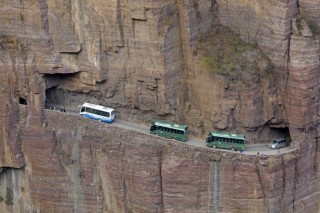Mountain Road Driving
Driving on mountain roads can be an exhilarating and rewarding experience. But it also comes with a unique set of challenges and hazards. The narrow, winding roads, steep inclines and declines, and sharp curves require a different set of driving skills and techniques than driving on flat terrain.
To ensure your safety and the safety of others on mountain roads, it's important to follow a few simple guidelines.
1. Know the Road: Before embarking on a mountain road trip, it's essential to know the route, the terrain, and the road conditions. Research the route, check the weather forecast, and be aware of any road closures or construction. Familiarize yourself with the road's layout, including any steep inclines, sharp curves, and blind spots.
2. Check Your Vehicle: Make sure your vehicle is in good working condition before driving on mountain roads. Check the brakes, tires, engine, and fluid levels. Ensure that your windshield wipers are working correctly, and your headlights and taillights are functioning properly. It's also a good idea to carry emergency supplies like a spare tire, tools, and a first aid kit.
3. Drive Defensively: Defensive driving is essential when driving on mountain roads. Be aware of your surroundings, stay alert, and keep a safe distance from other vehicles. Stay within the speed limit and slow down when approaching curves, inclines, or declines. Be prepared to stop or slow down quickly if necessary.
4. Use Your Gears: When driving on steep inclines or declines, use your vehicle's gears to control your speed. Downshift to a lower gear when going downhill to avoid overheating your brakes, and upshift when going uphill to maintain your speed.
5. Keep Your Eyes on the Road: Pay attention to the road ahead and keep your eyes on the road. Avoid distractions like texting or eating while driving. Keep both hands on the steering wheel and maintain a steady speed.
6. Watch for Wildlife: Mountain roads are often home to a variety of wildlife, including deer, elk, and bears. Be aware of the wildlife and watch for any signs of animals crossing the road. Slow down if you see animals near the road and give them plenty of space.
7. Be Prepared for Emergencies: It's always a good idea to be prepared for emergencies when driving on mountain roads. Make sure you have a fully charged cell phone, a map or GPS, and a flashlight. If you get stuck or stranded, stay with your vehicle and call for help.
8. Stay Calm: Driving on mountain roads can be stressful, especially if you're not used to the terrain. Stay calm and focused, and take breaks if you feel tired or overwhelmed. Don't let other drivers or road conditions intimidate you. Remember that your safety and the safety of others on the road is the most important thing.
Driving on mountain roads can be a challenging and rewarding experience. By following these simple guidelines, you can ensure your safety and the safety of others on the road. Remember to stay alert, be prepared, and enjoy the beautiful scenery that mountain roads have to offer.
You may like:



